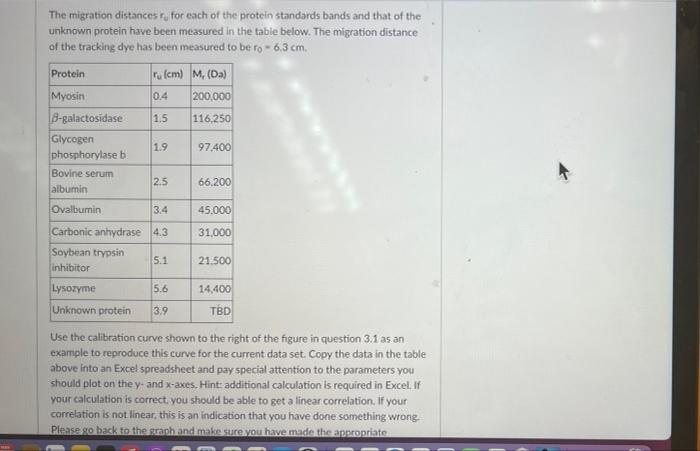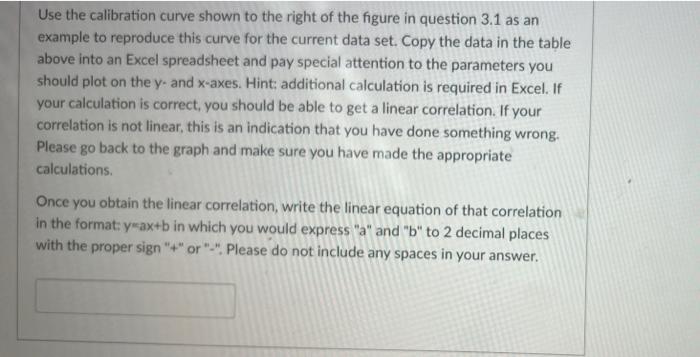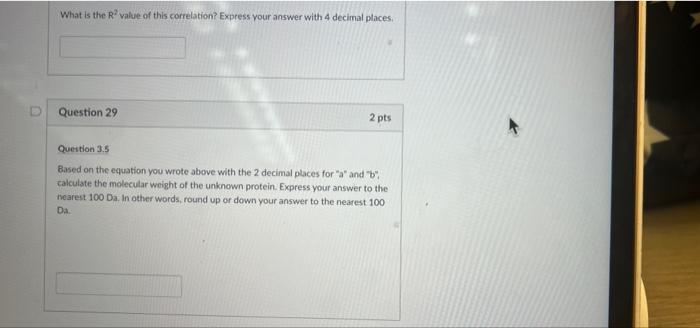The migration distances tu for each of the protein standards bands and that of the unknown protein have been measured in the table below. The migration distance of the tracking dye has been measured to be ro - 6.3 cm. Protein ru (cm) M (D) Myosin 0.4 200,000 B-galactosidase 116,250 Glycogen 97.400 phosphorylaseb Bovine serum 2.5 66.200 albumin 1.5 1.9 Ovalbumin 3.4 45.000 Carbonic anhydrase 4.3 31,000 Soybean trypsin inhibitor 5.1 21.500 Lysozyme 5.6 14.400 Unknown protein 3.9 TBD Use the calibration curve shown to the right of the figure in question 3.1 as an example to reproduce this curve for the current data set. Copy the data in the table above into an Excel spreadsheet and pay special attention to the parameters you should plot on the y- and x-axes. Hintadditional calculation is required in Excel. If your calculation is correct, you should be able to get a linear correlation. If your correlation is not linear, this is an indication that you have done something wrong. Please so back to the stanhand make sure you have made the appropriate Use the calibration curve shown to the right of the figure in question 3.1 as an example to reproduce this curve for the current data set. Copy the data in the table above into an Excel spreadsheet and pay special attention to the parameters you should plot on the y. and x-axes. Hint: additional calculation is required in Excel. If your calculation is correct, you should be able to get a linear correlation. If your correlation is not linear, this is an indication that you have done something wrong. Please go back to the graph and make sure you have made the appropriate calculations. Once you obtain the linear correlation, write the linear equation of that correlation in the format:y-ax+b in which you would express "a" and "b" to 2 decimal places with the proper sign "+" or "-". Please do not include any spaces in your answer. What is the R' value of this correlation? Express your answer with 4 decimal places D Question 29 2 pts Question 3.5 Based on the equation you wrote above with the 2 decimal places for "a" and "b! calculate the molecular weight of the unknown protein. Express your answer to the nearest 100 Da. In other words, round up or down your answer to the nearest 100 Da









